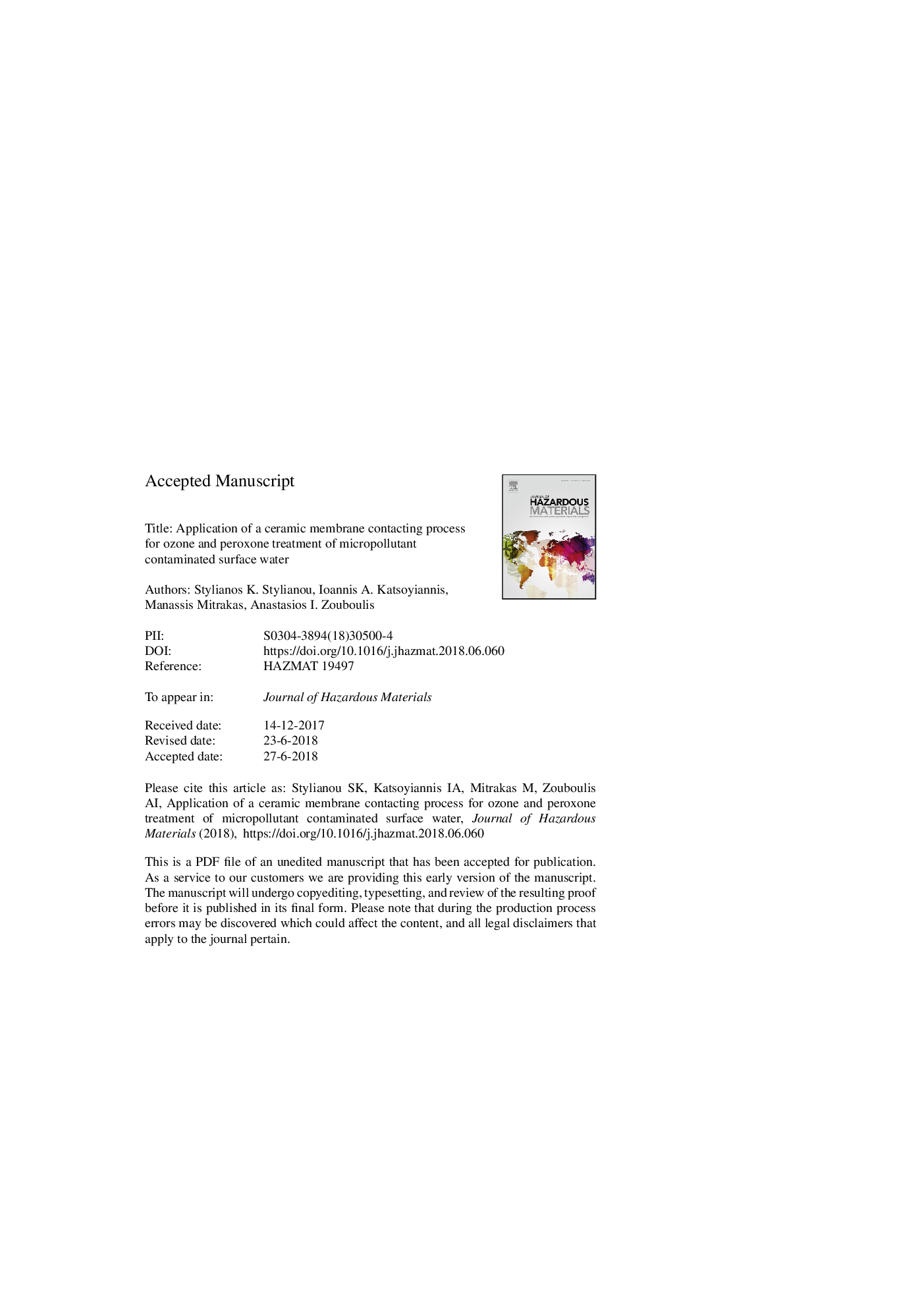| Article ID | Journal | Published Year | Pages | File Type |
|---|---|---|---|---|
| 6967957 | Journal of Hazardous Materials | 2018 | 25 Pages |
Abstract
This study investigates the performance of membrane-based ozonation and peroxone processes, regarding the transformation of carbamazepine (CBZ), benzotriazole (BZT), p-chlorobenzoic acid (pCBA) and atrazine (ATZ) in natural surface waters, as well as the formation of bromates. Ozonation, performed with the use of ceramic membrane contactor, was able to diminish CBZ concentration below 0.1â¯Î¼M at 0.4â¯mg O3/mg DOC, i.e. presenting >90% removal rate, whereas the transformation of BZT, pCBA and ATZ was not exceeded 70%, 57% and 49%, respectively, under the same experimental conditions. The addition of H2O2 reduced the removal efficiency of CBZ, since up to -8% transformation values were observed at 0.1â¯mg O3/mg DOC. In contrast, the transformation of ozone-resistant compounds pCBA and ATZ was slightly improved by approximately 5-10%, at 0.8â¯mg O3/mg DOC. Membrane-based oxidative treatment of surface water resulted to high bromate concentrations (49â¯Î¼g/L and 28â¯Î¼g/L for ozone and peroxone process, respectively, at 0.8â¯mg O3/mg DOC). The results obtained by using the membrane contactor were also compared with the corresponding from conventional batch experiments. These results suggest that the implementation of membrane contactors with the highest possible inner surface per volume along with the use of low ozone gas concentration are required to improve the removal of micropollutants and diminish bromate formation.
Related Topics
Physical Sciences and Engineering
Chemical Engineering
Chemical Health and Safety
Authors
Stylianos K. Stylianou, Ioannis A. Katsoyiannis, Manassis Mitrakas, Anastasios I. Zouboulis,
